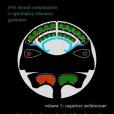《The Harmonic Mind: From Neural Computation to Optimality-Theoretic Grammar》是Mit Pr出版的圖書,作者是Smolensky, Paul,Legendre, Geraldine。
基本介紹
- 中文名:The Harmonic Mind: From Neural Computation to Optimality-Theoretic Grammar
- 作者:Smolensky, Paul、Legendre, Geraldine
- 出版社:Mit Pr
- 出版時間:2006年1月
- 頁數:592 頁
- 定價:62.15 美元
- 裝幀:HRD
- ISBN:9780262195263
- 叢書:The Harmonic Mind: From Neural Computation to Optimality-Theoretic Grammar
內容簡介
An integrated connectionist/symbolic architecture of the mind/brain, applied to neural/genomic realisation of grammar; aequisition, processing, and typology in phonology and syntax; and foundations of cognitive explanation. Despite their apparently divergent accounts of higher cognition, cognitive theories based on neural computation and those employing symbolic computation can...(展開全部) An integrated connectionist/symbolic architecture of the mind/brain, applied to neural/genomic realisation of grammar; aequisition, processing, and typology in phonology and syntax; and foundations of cognitive explanation. Despite their apparently divergent accounts of higher cognition, cognitive theories based on neural computation and those employing symbolic computation can in fact strengthen one another. To substantiate this controversial claim, this landmark work develops in depth a cognitive architecture based in neural computation but supporting formally explicit higher-level symbolic descriptions, including new grammar formalisms. Detailed studies in both phonology and syntax provide arguments that these grammatical theories and their neural network realisations enable deeper explanations of early acquisition, processing difficulty, cross-linguistic typology, and the possibility of genomically encoding universal principles of grammar. Foundational questions concerning the explanatory status of symbols for central problems such as the unbounded productivity of higher cognition are also given proper treatment. The work is made accessible to scholars in different fields of cognitive science through tutorial chapters and numerous expository boxes providing background material from several disciplines. Examples common to different chapters facilitate the transition from more basic to more sophisticated treatments. Details of method, formalism, and foundation are presented in later chapters, offering a wealth of new results to specialists in psycholinguistics, l

